Jim looks for answers on whether damaged pellets could affect the accuracy of shooting
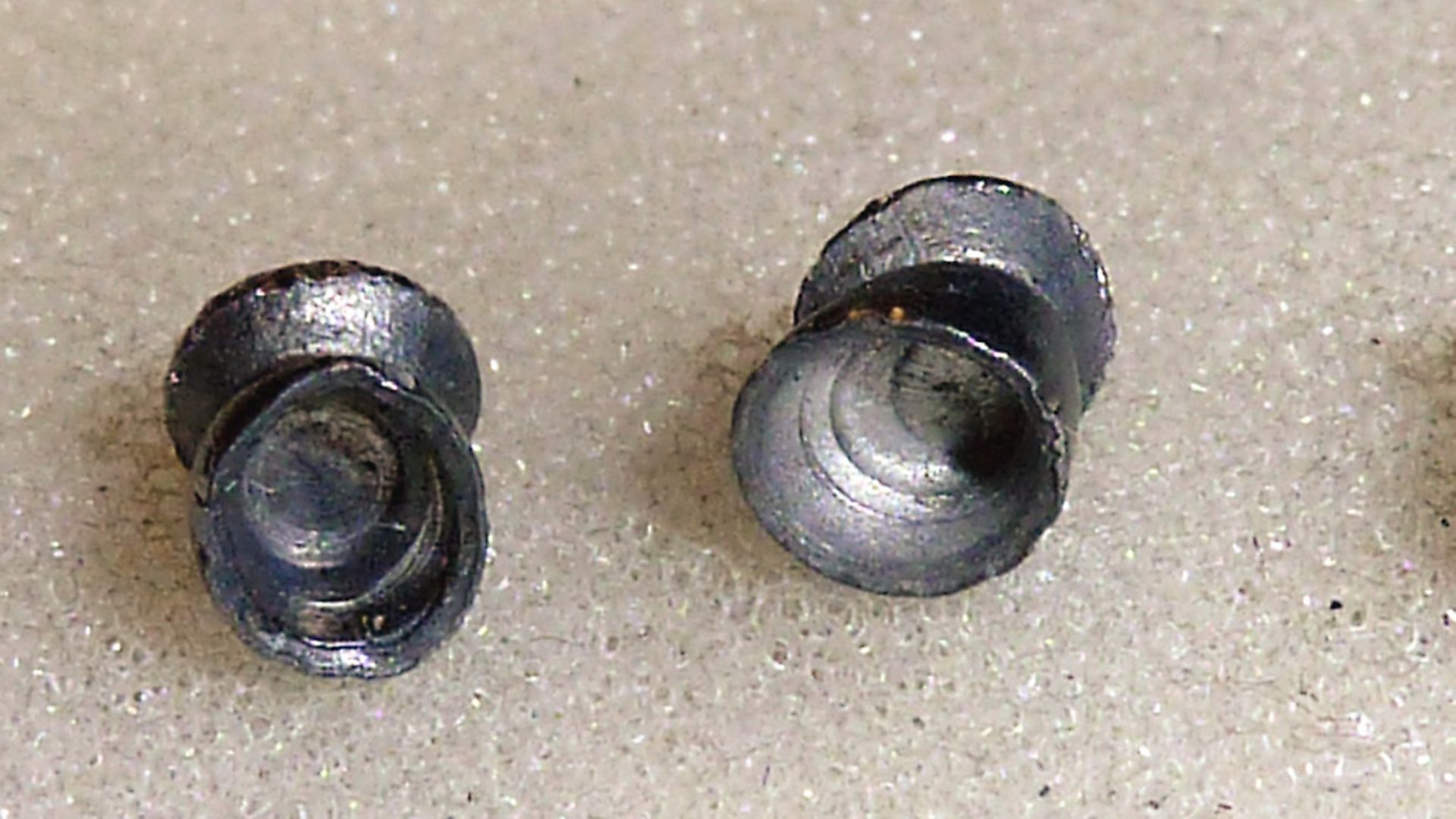 credit: Archant
credit: Archant
There was a time when it was not uncommon to open a tin of pellets and discover that a significant percentage of them were badly deformed, or even missing their heads, but improved manufacturing machinery and quality control has made that largely, although not exclusively, a thing of the past. I honestly cannot remember the last time that I found a damaged pellet in any of the tins I bought – and I have bought a lot – but occasionally, a few people report otherwise.
The most common pellet damage today is deformation of the skirt which, unlike most of the pellet damage of old, is not a manufacturing issue, but a packing, handling or transportation problem. Many modern pellets have thin skirts that form a seal in the breech at low air pressure, which is generally a good thing for energy efficiency, but does make the skirts more susceptible to damage. However, because the skirts are thin and soft, in theory it should take little force from the compressed air in an airgun to return them to their original shape, which begs the question of whether skirt damage will affect muzzle energy and accuracy.
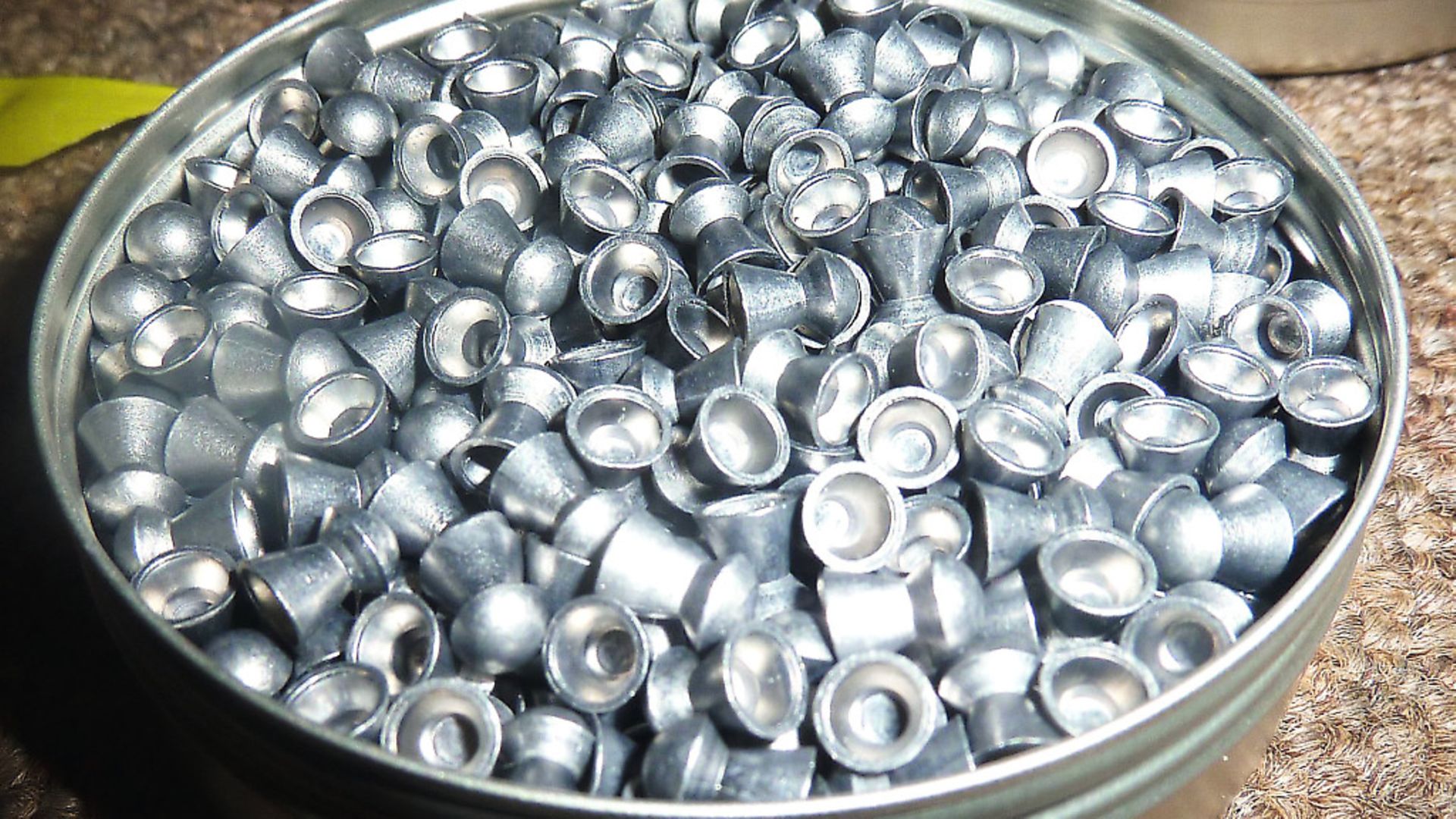 credit: Archant
credit: Archant
Extreme damage
There is a school of thought that considers a powerful blast of air from a spring airgun to be sufficient to reform mildly damaged skirts in the breech, but not so in a PCP, so that is perhaps the first thing to address.
I knew from past experiments that springers can, in some circumstances, reshape deformed pellet skirts, but had not tested PCPs, so I squeezed the skirts of three .177 pellets to 3.7mm, which is far greater distortion than any pellet I’ve ever seen straight from the tin. I had to use a thin Allen key to seat the pellets in the magazine, which by itself reduced the deformation to 4.08mm. To see whether the act of chambering a pellet would further reduce ovality, I cycled one into the breech, then used a cleaning rod to push it back out, and it was still oval.
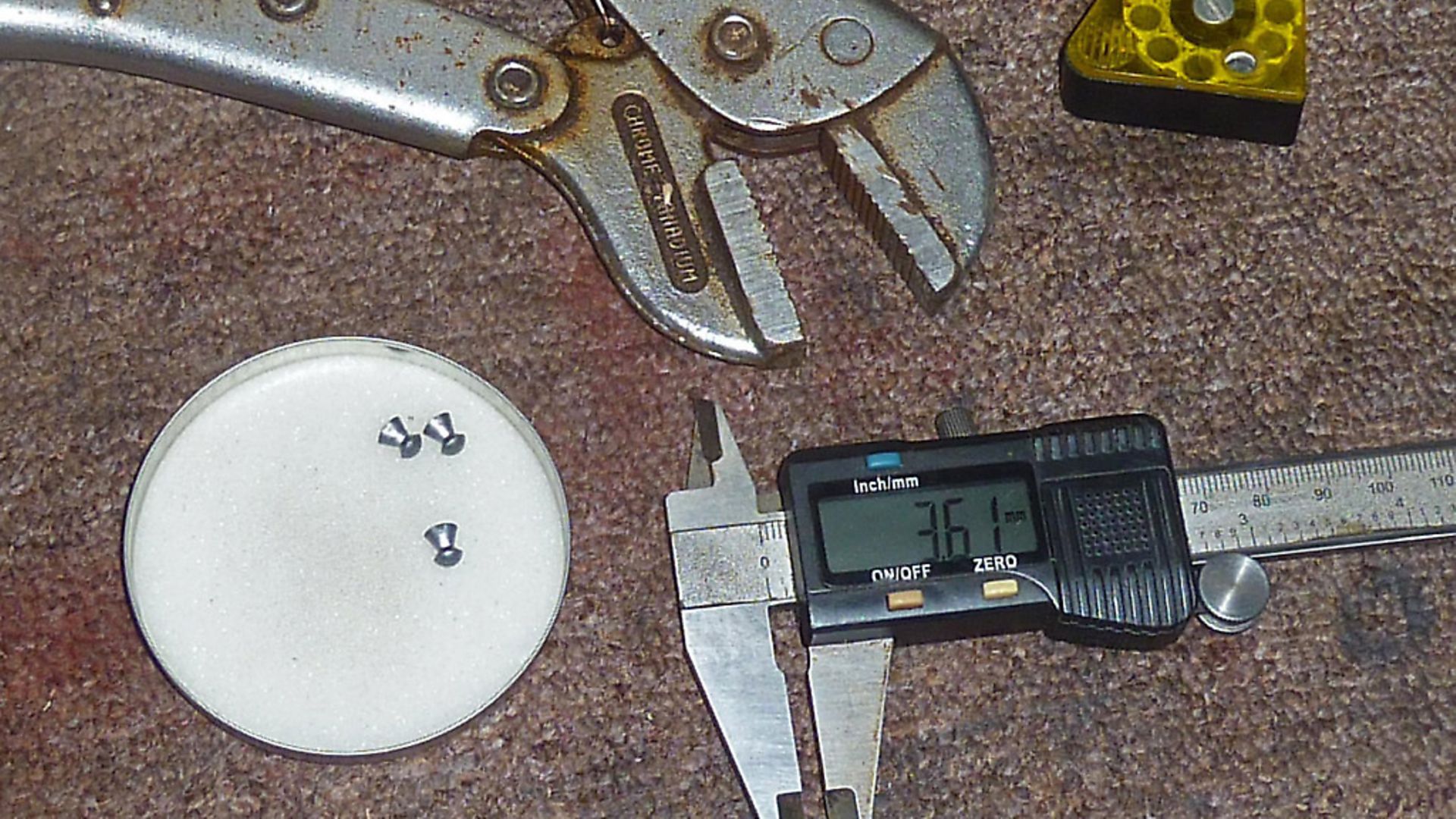 credit: Archant
credit: Archant
I shot the pellets into a wrobbled-up old bed sheet 50 yards downrange, to catch the pellets with minimum impact damage, then retrieved and inspected them.
The skirts of two of the three pellets were more squashed than they had been originally, but that must have been due to impact damage because the skirt of the third looked pretty round. Close inspection revealed that the skirts of all three pellets had indentations from the rifling impressed right around their periphery, so they must have been in contact with the rifling, and they must have been at least partially reformed by the PCP before exiting the muzzle. I could not tell whether the depth of rifling indentations was even right around the periphery, so it is possible that the skirts ended up less than round, which would not aid accuracy. At least we know that PCPs can, in some instances, partially reform deformed skirts.
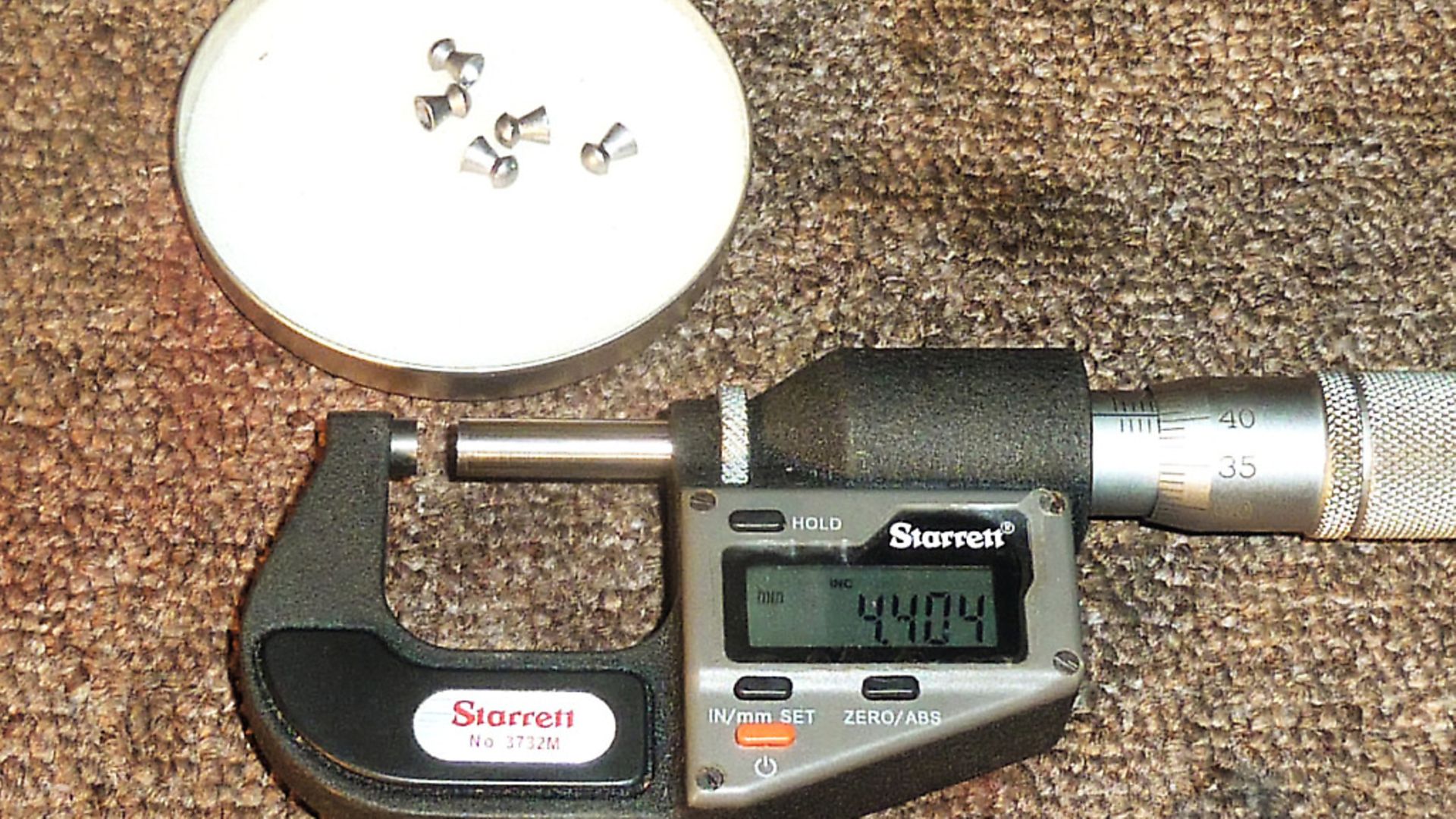 credit: Archant
credit: Archant
The Chrono’ Test
Before plunging headlong into accuracy testing, I decided to run damaged and undamaged pellets through the chronoscope, to see whether the deformed skirts affected muzzle velocity, and I’m glad I did, because it saved me a lot of work. The extreme velocity spread with damaged pellets through my PCP was five times as great as with undamaged pellets, at 50fps against 10fps, and there was no point bothering to test accuracy because even though the pellet skirts showed rifling dents right around the periphery, with a 50fps spread, it would be poor.
What I think was happening with these very distorted pellets was that the initial blast of compressed PCP air was not sufficient to reform the skirts of all the pellets, so some air was lost initially to blow by, causing the huge shot-to-shot velocity variation, but by the time the pellets reached, or were in the choke, the skirt had expanded to make full contact.
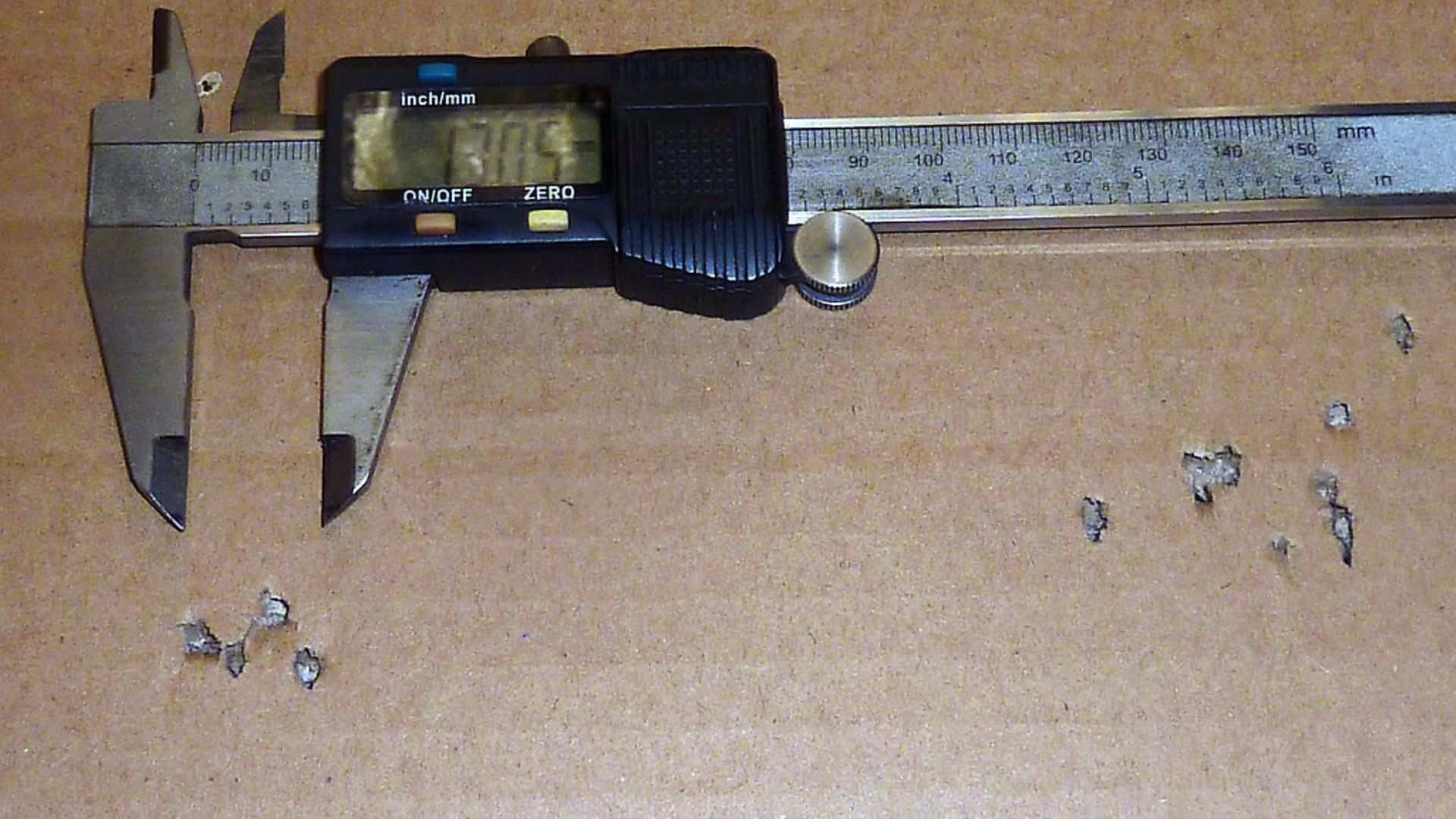 credit: Archant
credit: Archant
Testing through a spring airgun, the damaged pellets had better shot-to-shot variation than the PCP at just under 30fps, but muzzle velocity was in the order of 20fps to 30fps down, suggesting that, again, there was a degree of air blow-by before the skirt expanded enough to form a seal. Even though the shot-to-shot velocity variation was lower than that of the PCP, the effect on accuracy of initial blow-by on accuracy would probably be as great or greater, because it would change the point in the recoil cycle at which the pellet started to move, so it would change the point at which the pellet reached the muzzle. Variations in pellet start and exit timing are disastrous to spring-airgun accuracy. I needed to test pellets with less severe distortion, more in keeping with what you might typically pull out of a tin and, as luck would have it, I’d been given just that.
Typical damage
The damaged pellets in the sample tin showed the hallmarks of the skirts being forced against the heads of adjacent pellets, or caught between two pellet heads, and ranged from slight ovality to two deeper diametrically opposed dents.
The tin did not contain enough pellets of any individual degree of severity of damage for meaningful testing, so I had no choice other than to try to replicate the different levels of damage in the sample tin to provide enough samples for testing, starting with moderate ovality.
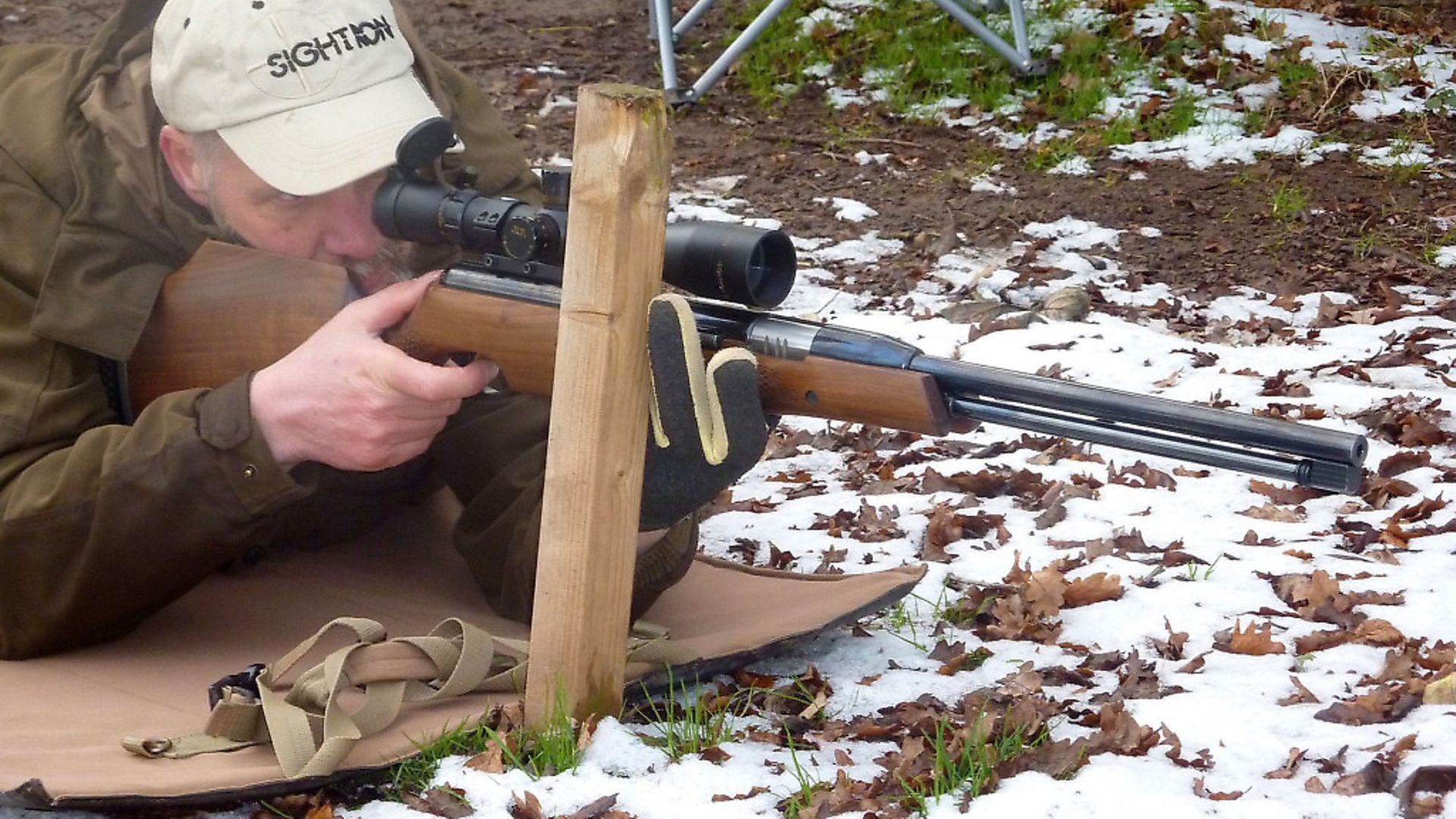 credit: Archant
credit: Archant
To replicate moderate deformation, I used a micrometer to squash pellet skirts to 4.4mm, which you could feel if you rolled the pellet between the pads of finger and thumb when taking it from the tin, as many people do, and which most would decline to shoot. As it turned out, rejecting the pellets would be a wise move.
My TX200HC is typically giving in the range of 772fps to 778fps with 8.4gn pellets, but with the pellets with slightly oval skirts, that dropped to 748fps to 763fps. The drop in velocity is not in itself a huge issue, nor is the increase in extreme spread, but what most certainly IS an issue is the variations in pellet start and exit points in the recoil cycle, which means the rifle will definitely be pointing in a slightly different direction as pellets exit the muzzle, so you could kiss goodbye to accuracy.
To make matters worse, I shot damaged pellets through my TX200HC into a pile of rags and retrieved them for close inspection, to discover that the skirts had not fully reformed, and that the squashed portions of the skirt did not have any rifling impressions, so there was no way the affected pellets could shoot with any degree of accuracy. So much for the famed ‘powerful blast of air’ in a springer reforming damaged pellet skirts!
Pellet skirt ovality is not the worst form of damage; the very worst pellet skirt deformation results in part of the skirt being concave, which is almost certainly the result of the side of a pellet head pressing directly against the skirt of the affected pellet, and it seems inconceivable that a skirt with a concave section could be reformed in the breech or muzzle.
Accuracy
So to accuracy testing which with pellets suffering moderate deformation was, in a word, abysmal, and that went equally for spring and PCP. Not only did moderate pellet skirt ovality dramatically increase group sizes, but it also made the pellets far more susceptible to wind drift. Why so susceptible to wind drift? In a nutshell, in addition to, and/or as a consequence of being less stable in flight, the ballistic coefficient of the deformed pellets would have been much lower, so they lost velocity more quickly, took longer to get to the target, and so the effect of the wind lasted for a longer period.
Pellets that visually seemed OK, but had come out of the tin that contained a number of moderately distorted examples could group well, but every few shots would produce a flier, typically around 1.5” to 2” outside the group. That backs up anecdotal evidence from shooters at Nomads HFT club who have in the past sorted damaged pellets from a tin, only to report getting unexplained fliers when using the apparently undamaged remainder.
More careful visual scrutiny of the remaining pellets in the tin, using a 30X magnification Lupe, revealed that the pellets producing the fliers had a minor amount of deformation in the form of slight ovality, that had gone unnoticed in my earlier (possibly rushed) visual checks, but was obviously sufficient to send the pellets off course. The ovality was so slight that I was unable to detect it by rolling the skirt between the pads of my finger and thumb.
What to do?
It is generally speaking ‘safe’ to use mildly deformed pellets insofar as it will not damage your air rifle, but from the accuracy standpoint, it is most certainly not safe to use mildly or even, it seems, slightly deformed pellets.
So what to do if you find your new tin of pellets contains deformed pellets? One option is to sort through them and weed out any that are deformed, for which I would suggest using a Lupe or magnifying glass. There’s a problem with doing that, though; the manufacturer won’t realise there is an issue, so it won’t be put right, and the chances are that other people will find their latest tin contains damaged pellets, so the better option is to return the pellets to the shop, and inform them of the problem. This is not only being fair to the manufacturer, but also to the shop, because if one tin of pellets is affected, it’s quite likely that other tins from the same sleeve, consignment or batch will also be affected, so the shop can check the rest of their stock and take action if necessary.
Reshaping
Because the skirts of pellets most prone to damage are so soft, it would take very little force to reshape them by gently pushing them onto a suitably sized truncated cone, such as the end of an audio jack plug. Whether it would be worth the time and effort probably depends on the intended use; most serious FT and HFT shooters sort enough pellets to complete a course before a shoot, so reshaping that sort of number would not add too much time to the process, but for the rest of us, reshaping a tin of pellets would probably take over an hour, and I’m sure I’m not the only one who can find far better things to do.
To sum up
1. Mildly damaged pellets probably won’t damage your airgun.
2. Damaged pellets will ruin accuracy.
3. A tin containing obviously damaged pellets will probably contain others with very slight damage that can cause fliers.
4. If you find damaged pellets in a tin, it is in everyone’s best interest to inform the manufacturer or importer, with details of batch numbers and dates.